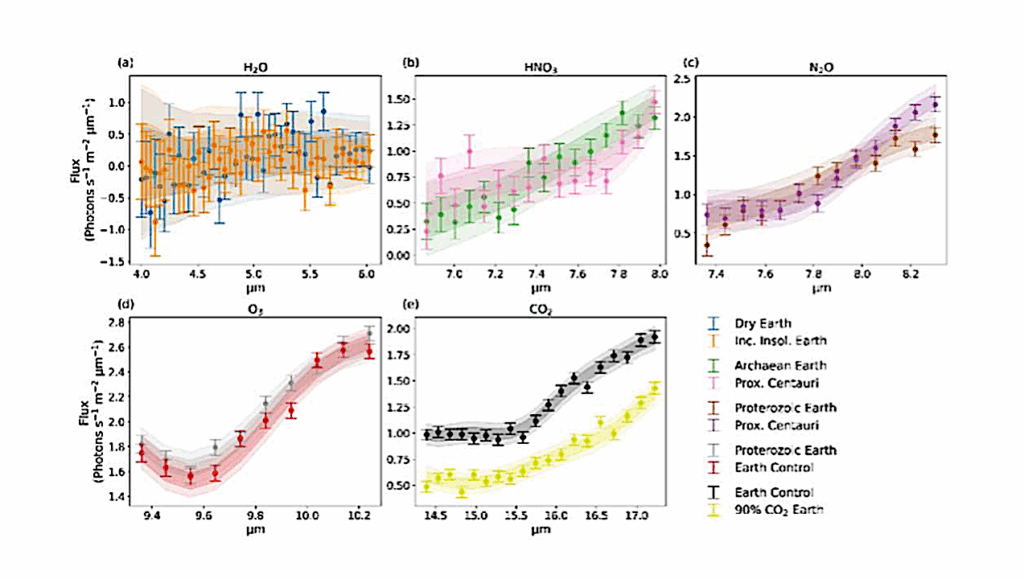Photochemical Hazes Can Trace The C/O Ratio In Exoplanet Atmospheres

Photochemical hazes are suspected to obscure molecular features, such as water, from detection in the transmission spectra of exoplanets with atmospheric temperatures < 800 K.
The opacities of laboratory produced organic compounds (tholins) from Khare et al. (1984) have become a standard for modeling haze in exoplanet atmospheres. However, these tholins were grown in an oxygen-free, Titan-like environment that is very different from typical assumptions for exoplanets, where C/O~0.5. This work presents the 0.13-10 micron complex refractive indices derived from laboratory transmission measurements of tholins grown in environments with different oxygen abundances.
With the increasing uptake of oxygen, absorption increases across the entire wavelength range, and a scattering feature around 6 micron shifts towards shorter wavelengths and becomes more peaked around 5.8 micron, due to a C=O stretch resonance. Using GJ 1214b as a test-case, we examine the transmission spectra of a sub-Neptune planet with C/O ratios of solar, 1, and 1000 to evaluate the effective differences between our opacities and those of Khare.
For an atmosphere with solar hydrogen and helium abundances, we find a difference of 200-1500 ppm, but for high-metallicity (Z=1000) environments, the difference may only be 20 ppm. The 1-2 micron transmission data for GJ 1214b rule out the Titan-like haze model, and are more consistent with C/O=1 and C/O=solar haze models.
This work demonstrates that using haze opacities that are more consistent with underlying assumptions about bulk atmospheric composition are important for building self-consistent models that appropriately constrain the atmospheric C/O ratio, even when molecular features are obscured.
Lia Corrales, Lisseth Gavilan, D. J. Teal, Eliza M.-R. Kempton
Comments: accepted to ApJL
Subjects: Earth and Planetary Astrophysics (astro-ph.EP)
Cite as: arXiv:2301.01093 [astro-ph.EP] (or arXiv:2301.01093v1 [astro-ph.EP] for this version)
Submission history
From: Lia Corrales
[v1] Tue, 3 Jan 2023 13:37:39 UTC (671 KB)
https://arxiv.org/abs/2301.01093
Astrobiology








